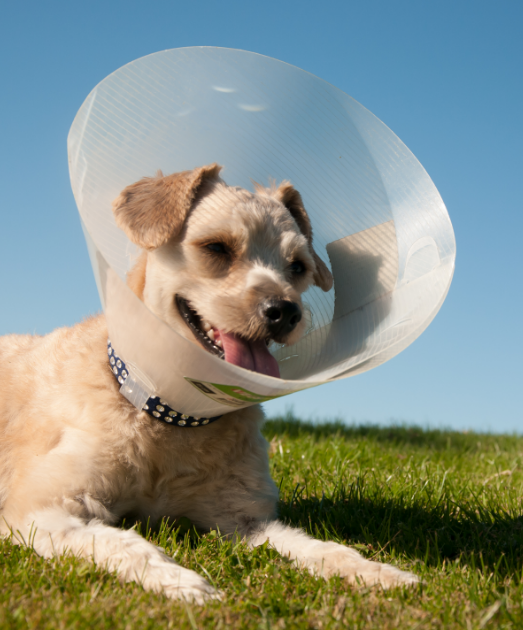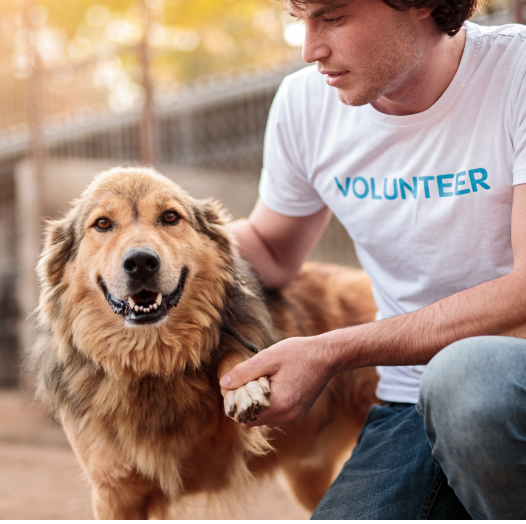One of the most important ways Florida residents can be a friend to companion animals is to advocate for spay and neuter programs. This one procedure helps curb pet overpopulation, saves lives and improves the health of pets everywhere. To help promote awareness, education and accessibility to spay and neuter assistance programs, we’ve compiled key information on this page. There are many benefits to spaying and neutering and we’re passionate about the lasting difference it makes.
FL Animal Friend awards grants to Florida shelters and animal control agencies, to offer free or low-cost spaying and neutering to the community. Our ongoing efforts are made possible by our specialty license plate program.
You’ll find further information on the topics listed here as you read, or you can jump into any of the sections by clicking below.
Spaying and neutering, also known as “fixing” or “altering,” are the processes of removing the reproductive organs of a dog or cat.
Whether you have recently adopted, are considering getting a pet, or have rescued a stray from your community, one of the most important initial actions to take is to spay or neuter your animal. The operation may be the single most important decision you can make for various reasons, including the pet’s health, decreasing the number of community animals, and to stop the overpopulation of animal shelters and animal rescues.
Ovariohysterectomy, or the typical “spay”: the ovaries, fallopian tubes and uterus are removed from a female dog or cat. This makes her unable to reproduce and eliminates her heat cycle and breeding instinct-related behavior.
A neuter is the surgical removal of a male dog or cat’s testicles so that it cannot impregnate a female.

Talk with your veterinarian to determine when to spay or neuter your pet, and what you’ll need to do prior to surgery and recovery after surgery. If you are adopting a cat or dog from a shelter or rescue, in most cases, your pet will be sterilized prior to adoption.
What to ask your veterinarian:
Ask your veterinarian to include pain medication to ease any discomfort.
After the surgery, an animal may experience some pain, but typically a veterinarian will provide medication to help ease any discomfort.
An Elizabethan collar also known as a pet cone is recommended for the first few days to prevent your pet from licking the stitches, and to avoid rigorous playing, jumping and running while they heal, which can take up to two weeks.
Spaying and neutering should typically occur in the first six months of an animal’s life. Many veterinarians now sterilize healthy cats and dogs as young as eight weeks old. Cats can reproduce as young as four months old, and if they aren’t spayed, they can go into heat as often as four to five days every three weeks. When this happens, they will vocalize more and urinate inappropriately in an effort to find a mate, which can be very unpleasant for any owner.
Surgical sterilization
During surgical sterilization, a veterinarian removes the reproductive organs of your animal.
Surgical alternatives to traditional spaying and neutering
Some pet owners may opt for one of these alternatives:

When you think about overcrowded shelters, spaying and neutering might not be the first thing that comes to mind, but it’s actually the best solution for combatting pet overpopulation.
Did you know that just one unaltered female dog and her offspring can produce 67,000 puppies in only six years? And in seven years, one female cat and her offspring can produce an incredible 370,000 kittens. With that number of dogs and cats, it’s almost certain that a large portion of them would end up homeless and unwanted.
By spaying and neutering your pet, you can save lives. This procedure helps prevent unwanted pets from crowding animal shelters and being euthanized.
The Health Benefits of Spaying or Neutering Your Pet
Neutering your male pet can prevent testicular tumors and various prostate problems. It also decreases the possibility of perianal tumors and hernias, which are commonly found in older, unaltered dogs. In female dogs and cats, spaying can prevent malignant breast tumors, as well as uterine cancer and uterine infections that can put your pet’s life in jeopardy.
Will The Procedure Have A Negative Effect On My Pet’s Behavior?
Actually, the procedure can have a positive effect. Not having your pet neutered can lead to undesirable behavior in male cats and dogs. The procedure can help prevent bad behaviors later in life, including general aggression, roaming to find a mate, unwanted mounting of other animals and objects, and marking their territory with very strong-smelling urine. This is why working dogs and service dogs are, in most cases, sterilized. It minimizes distractions, helping to keep them attentive and focused. Sterilized pets are not only more affectionate but also less likely to bite, run away or be aggressive.
Unexpected Benefits To Spaying or Neutering Cats
Why should I spay or neuter my pet? The answer isn’t singular, so here are the top five reasons.
1. Reduce Pet Overpopulation and Save Lives
Each day 70,000 puppies and kittens are born in the U.S. That represents one human to 15 dogs and 45 cats. As long as these birth rates continue, there will never be enough homes for these animals. That’s thousands of newborn litters left without a home, many of which end up either in shelters or on the streets. Spaying and neutering helps reduce the number of strays and unwanted animals in a community.
Millions of tax dollars are spent every year to provide care for unwanted, abandoned and neglected animals, many of whom come from litters of household pets that could have been prevented with alteration. The number of homeless animals varies by state, however, in some states there are as many as 300,000 homeless animals euthanized in animal shelters every year. Nationwide, there are more than 920,000 healthy, adoptable cats and dogs that are euthanized in shelters annually. According to the UF Animal Shelter Census, “in 2020, shelter animal intake was 14.5 animals per 1,000 residents in Florida, compared to 12.5 for the U.S. as a whole. Florida shelter euthanasia was 1.9/1,000 residents, compared to 1.3 nationally.” By spaying and neutering animals, we reduce the number of animals on the streets and entering shelters, which reduces the amount of money spent for their care and the rate of euthanization.
2. Healthier Lives
Spaying and neutering can help your furry best friend live a longer life!
A USA Today article stated that spayed/neutered pets live the longest. According to the report, neutered male dogs live 18% longer than unneutered male dogs and spayed female dogs live 23% longer than unspayed female dogs.
The increased lifespan of altered pets can be partially attributed to their decreased urge to roam, exposing them to fights with other animals, getting struck by cars and other mishaps.
Another contributor to the increased longevity of spayed and neutered dogs and cats is the reduced risk of certain types of cancers and other medical conditions. Unspayed female cats and dogs have a far greater chance of developing pyometra (an oftentimes fatal uterine infection), uterine cancer and other cancers of the reproductive system. Besides preventing unwanted litters, neutering your male companion prevents testicular cancer. It can also prevent perineal hernias and prostate disease.
3. Cost Efficient
The cost of your dog or cat’s alteration procedure is a lot less than the cost of your pet having and you caring for a litter. It also reduces the chance that they will roam and get into fights with other animals, thus saving you the cost of a potentially life-threatening injury.
Many states also offer free or low-cost spay and neuter programs that reduce the cost of the procedure.
4. Better Behavior Toward Humans and Animals
Unaltered animals are much more assertive and prone to urine-marking (lifting their leg or spraying) than fixed dogs and cats. Spaying or neutering your dog should reduce urine-marking and may stop it altogether, saving you from having to clean up a mess in the house, and the smell. Alteration can also minimize howling and the urge to roam. Roaming behavior can be a danger to livestock and other pets, as well as the cause for automobile accidents, destruction of property and frightening children or elderly people.
Spaying and neutering can also adjust an animal’s focus to their owner. This results in a stronger bond with your animal and a greater sense of love between both parties.
While getting your pets spayed/neutered can help curb undesirable behaviors, it will not change their fundamental personality, like their protective instinct.
5. Helping More Animals Find Homes
One benefit of adopting a pet from a shelter is the fact that most, if not all, animals are spayed or neutered after they are brought into the facility. Many choose to adopt a pet from a shelter in an effort to find a pet that’s already spayed/neutered/vaccinated.
Spay/neuter programs are the most effective and most affordable way to reduce the population of community pets. In this case, a few dollars proactively spent to sterilize pets can save thousands of dollars in taxpayer expenses required to house, care and home those unwanted animals. More importantly, more than a million dogs and cats are euthanized each year in the U.S. because there are not enough homes to house them all. Since active spay/neuter programs have been growing, tens of thousands of deaths in Florida have decreased to the hundreds in many counties. In Hillsborough County, Florida, in 2000 – before spay/neuter programs were part of the solution – 23,827 dogs and cats were euthanized. In 2020 (January through October) – after nearly two decades of spay/neuter programs being widely available – only 504 dogs and cats were euthanized (all of those due to health and safety reasons).

Pet overpopulation is a very real concern in Florida, with many community cats living and breeding in neighborhoods across the state. There are also many homeless cats and dogs that are brought to animal shelters to await adoptive families. Most of these cats and dogs are not spayed or neutered, and this further contributes to the growing pet population in Florida. The fix, though, is relatively easy. Read on to find out what you can do to help fix pet overpopulation in Florida with the help of Florida Animal Friend.
Pets that are not spayed or neutered can produce unexpected litters of puppies or kittens, many of which end up in animal shelters around the state as pet owners are not prepared to, or capable of, caring for additional pets. The more pets we can collectively keep out of shelters the more we can help pets live long, healthy lives, both mentally and physically. Spay and neuter assistance programs help keep pets healthy while also preventing pet overpopulation.
Almost every community has publicly funded animal control and animal shelter programs. These programs are almost always funded through local taxes. The cost of picking up and caring for a stray pet can run easily into the hundreds of dollars per pet. Puppies and kittens often cost more than adult cats and dogs due to special medical and nutrition needs. Effective spay/neuter programs can reduce the number of animal control calls for service and the shelter intake by as much as 25% over time.
Additionally, many of the largest companies in America look at the availability of local pet programs as one of the deciding factors when they are looking to relocate or add facilities. Pets have become such an integral part of families that employers care if the community is pet-friendly or not – available spay/neuter programs are one key aspect of that determination.
Trap-Neuter-Release (TNR)
Trap-neuter-release programs for community cats are two-fold. They educate the public about lost or homeless community cats, and they fix homeless cats so they don’t contribute to overpopulation. In turn, this helps the cats live longer, healthier lives.
Only community cats are eligible for trap-neuter-release programs, and many programs require good samaritans to trap the cats on their own and bring them to the shelter or animal organization for spay or neuter surgery. Once the surgery is complete, the cat’s ear is clipped, known as ear-tipping, so that it is identifiable as a cat that has already participated in a TNR program.
Vaccinations are often administered at the same time as spay/neuter surgeries, helping to protect cats against rabies, FVRCP (feline distemper) and feline leukemia. Many volunteers and organizations are also readily available and willing to assist with trapping cats for TNR programs. With low commitment and almost no training required, more community cats are helped over time.
Local Trap-Neuter-Release (TNR) Ordinances
Many city and county ordinances address the TNR program, with the main purpose to reduce populations of stray cats in order to prevent euthanasia should overpopulation become an issue. These ordinances often indicate an organization responsible for the program, such as government-funded animal services or a local nonprofit. Those groups are also often charged with determining health, safety and potential nuisance impacts, if any, that stray animals may have on local wildlife or communities. The TNR program is one way to help mitigate any potential issues.
Public Education
Since trap-neuter-release programs include a public education aspect, many organizations work to spread the word about the effectiveness of TNR while encouraging people to volunteer in the efforts. Pet care education also helps teach pet parents the importance of spaying or neutering their pet as well as what to expect as their pet grows and ages. Programs like these have proven to reduce the number of homeless pets in shelters.
Large Breed Dog Sterilization
The cost of spay-neuter surgery for larger dogs can be much greater than it is for smaller pets, which can make it too expensive for low-income families and for shelters or rescues to absorb. Because of this, many shelters, rescue organizations, and low-cost clinics help provide spay and neuter services at discounted or no-cost rates to large dog owners, helping reduce future populations of unwanted large dogs.
New Spay Neuter Services
Florida Animal Friend grants are also available for animal shelters, rescue organizations and low-cost clinics that would like to begin providing spay and neuter services but do not currently. The grant provides incentive to start the program and help community members and their pets.

Animal rescue services aim to find suitable homes for unwanted, abused or community pets. Usually run by volunteers, the pets are cared for and prepared for life after adoption. Animal rescue groups depend on donations and/or adoption fees to fund their operations.
Animal shelters are usually government funded facilities that provide a temporary shelter to animals. Over 6 million unwanted dogs and cats enter animal shelters each year in the U.S. These are cases of unwanted, abused or abandoned animals that need shelter to keep them off the streets and out of further danger. There are many types of animal shelters outlined in this PETA article, policies that differentiate shelters from each other, and ways they can meet animal shelter standards.
Animal rescue organizations and animal shelters help to keep animals off of the streets and help find them homes. Since pet overpopulation remains an issue, in addition to housing and homing, spay and neutering programs with community support are needed to decrease the numbers of kittens and puppies entering shelters.
If you’re interested in finding a place to adopt a pet, please consider an animal rescue center or shelter.
The cost of caring for an animal can get quite expensive, however, there are low-cost and free spay and neutering programs available across Florida. Veterinarians may be willing to work with your budget, animal rescues and animal shelters may provide these services, and we have our grant program to help with the facility with their costs.
It starts with the Florida Animal Friend license plate. The license plate helps animal shelters, rescue organizations and low-cost clinics around the state by funding low-cost spay and neuter programs. A portion of the proceeds from every specialty Florida Animal Friend license plate, ($25 from each plate, which is the additional cost to the consumer for the plate compared to a standard plate), supports our nonprofit and allows us provide spay and neuter grants around the state to organizations that provide low cost spay/neuter services. The organizations we fund are awarded up to $25,000 for spay and neuter programs.
Each spring, municipal and non-profit agencies are encouraged to submit funding proposals for spay/neuter projects throughout Florida. The grant review committee reviews each proposal and its required documents, and scores it on the following criteria:
Based on the criteria scores and reviewer comments, the Florida Animal Friend Board of Directors establishes a funding priority list and awards funding based on the highest ranked proposal and then proceeds down the list until funds are exhausted. The maximum award for each proposal is $25,000.